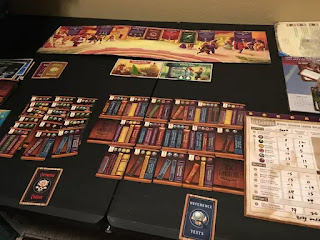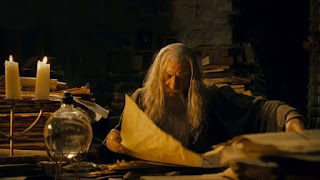As is my custom, I find it helpful to reflect upon the good and the bad of 2023. I start the year with goals; this post looks back at some of them and considers other factors we experienced this year.
Our year was defined by two factors:
- home improvement
- church involvement
As mentioned last year, our kitchen flooding (plus supply chain problems) meant we didn't get that fully fixed in 2022. Thankfully, we finished that project in March 2023. Then it was on to the basement, which we tackled this summer with a lot of help from friends. We rounded out the year fixing the porch, replacing the worn (and increasingly dangerous) wood with trex material. Let's hope next year sees less home projects; it was good, but exhausting.
For church involvement, my wife and I increased our responsibilities. She is on two teams handling various aspects of church matters; I became an elder, continued leading the men's ministry and a community group, and led a Sunday school in the fall. These efforts are 'joyful burdens,' and though they can be heavy, we pray that we can help.
On to goals:
Spiritual
My goals here:
- Be disciplined in prayer. My goals here:
- Overcome two besetting sins.
Prayer was pretty consistent when in my routine, but easily dropped when 'out of sync' due to illness, vacation or other factors. I need to be better about keeping the first things first, even when the day is abnormal.
I did make some progress in besetting sins, so that was encouraging, but more progress is needed.
Nutritional/Fitness
My goals here:
- Get (and keep) weight under 185 lbs.- Complete 240 workouts (run, bike, gym, hikes, etc.).
- Eat more fruit/vegetables.
I didn't meet the weight goal, though I had dropped to 192 by early December, the holiday excesses have me now at 197 lbs. My goal remains 185 lbs, and I've learned that it can be achieved only by dieting: eating a lot less (generally around lunch), snacking less, and so on.
I was diagnosed with a partial tear in my shoulder and moderate/severe arthritis in my knee, which did minimize my running and affect my workout approaches.
I did complete 298 workouts (not counting PT sesssions or basement hours), which is satisfactory. I am still "fit fat," meaning I'm in decent shape and can do cardio and weights without problems. I just need to lose some pounds. Most workouts were runs, gym, bike rides, and yardwork. My gym workouts 'shot up' as I did them more frequently for shorter time periods. As with last year, I incorporated a healthy dose of ab/core focus into what is typically upper body-focused. Included 2022 totals for reference:
2022: 38 runs for 91 miles, 113 gym workouts, 68 bike rides for 1061 miles, 7 hikes for 30 miles, 43 mow/yardwork, 5 misc.
2023: 22 runs for 54 miles, 182 gym workouts, 58 bike rides for 623 miles, 15 hikes/walks for 55 miles, 21 mow/yardwork, 113 hours spent working on the basement.
Reading
My goals here:
- Read 40 books.My goals here:
- Focus on American authors/topics.
- Pick another topic and 'get smart' (i.e. read a few books) on it. Probably humor.
No problem here; I read 50 books, and kept my 'owned but unread' pile at a pleasant number (down to about a dozen until Christmas). My post here caps this year's book recommendations. I made an American Reading list (see the link in the prior sentence) and chipped away at that. I did attempt to find books on humor, but there is shockingly little out there. Overall, I'm satisfied.
House
My goal here:
- Finish the basement.We did it! We actually did it. I spent August blogging about what it took; this summary post links to the others.
Language
My goal here:
- Continue studying Spanish.My goal here:
I did Spanish until April, then switched to Latin for a month or two, then went back to German until November, when I quite DuoLingo altogether (I explain my frustration here). They didn't send me statistics for the year, so I don't know how much time I put into it. Language is valuable, and I will seek another means of practicing in 2024.
Games
My goals here:
My goals here:
- Minimize clothing.
- Minimize game collection.
- Minimize game collection.
I did minimize clothing over the summer, which was helpful, but I've noticed it crept back up to the point where drawers are stuffed. Need to clean up again.
For games, my time was focused on minimizing my Magic collection. I sold 10,000 cards from there and got a nice return.
Conclusion
Looking across the six categories above, it was a pretty good year. The main thing that stands out as needing improvement are spiritual goals and the weight. Here's to a better 2024. "Never stop starting."
Looking across the six categories above, it was a pretty good year. The main thing that stands out as needing improvement are spiritual goals and the weight. Here's to a better 2024. "Never stop starting."





























